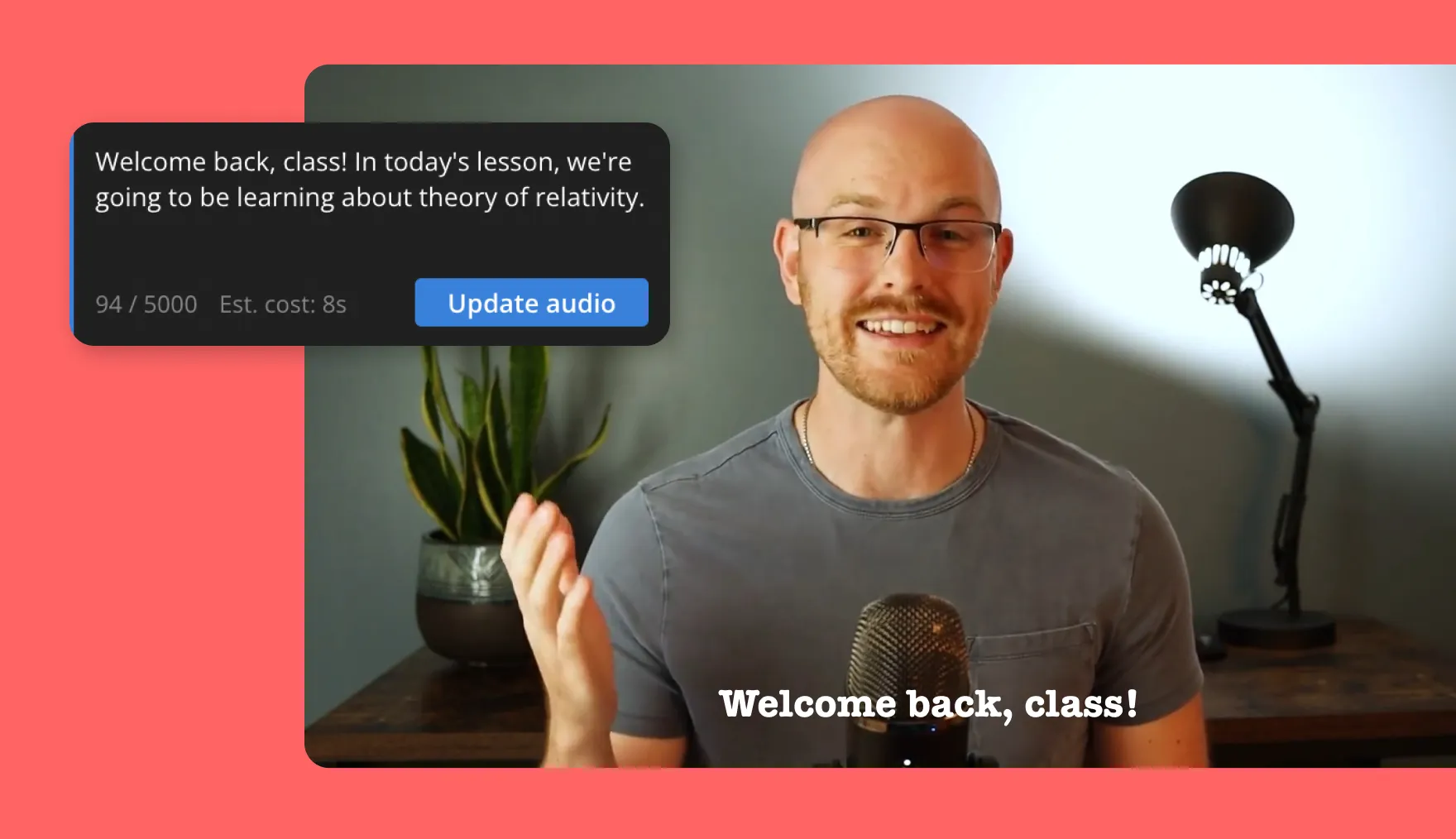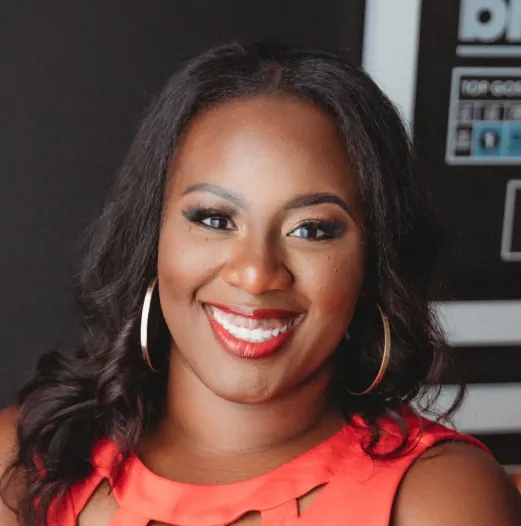Create a deepfake of yourself or edit a celebrity avatar for educational purposes

Make realistic videos with a deepfake of your choice
Lifelike AI Personas speak with lips and audio perfectly in sync
Unlock new content opportunities with a deepfake of yourself
Use a deepfake clone of yourself to eliminate time spent recording and presenting on camera. Don't have time to learn a script or find a filming location? Use your deepfake clone instead. Whether you're an educator, online coach, marketer, sales rep, or vlogger, deepfake content is a time-efficient tool to help cast your personality across multiple projects.

Expand your output with a team of AI Personas
As long as you have permission from the user, you can create deepfake videos using anyone's video footage. Create AI Personas for your entire team and streamline the production of tutorials, demos, training videos, and customer support duties. Kapwing also provides a variety of Stock Personas designed to broaden your brand’s visibility with diverse on-camera personalities typically found in paid talent agencies.

Embrace the power of lip-sync technology
Kapwing's lip-sync technology simplifies the task of matching audio with video, which is the time-consuming problem associated with deepfake production. After finalizing your deepfake avatar, click 'Export Project' and the video will be ready for download with pitch, tone, emphasis, and intonations matched to your chosen Persona.

Craft a fine-polished video with powerful editing tools
Once your AI Persona has memorized its script — write one yourself or use Kapwing's AI Script Generator — you can edit the deepfake video with a range of customizable free and paid tools. Create text headings to split educational content into clear sections and topics, add freeze frames to allow time to speak alongside your avatar during presentations, generate subtitles, and place logos to give your video an official company feel.



"Kapwing is incredibly intuitive. Many of our marketers were able to get on the platform and use it right away with little to no instruction. No need for downloads or installations—it just works."
Eunice Park
Studio Production Manager at Formlabs
Effortlessly enhance your library of video content

Tutorials
L&D teams leverage AI Personas to demonstrate product usage, introduce new features, create Help Center videos, and deliver personalized internal communications

Online Courses
Educators use deepfake videos to rejuvenate dull online course material, turning text into video and making educational content stand out

Social Media Clips
Influencers and social media managers find deepfake videos are the perfect tool to spearhead viral comedy content on TikTok, Instagram, and YouTube, particularly satire and parody

Product Demos
YouTubers, marketers, and sales reps use Kapwing to create detailed product demos while ensuring brand style remains intact with the use of AI Personas

Training Videos
Using AI Personas that mirror their likeness, HR and customer support teams generate high-quality training videos at scale without the need for bulk recording

Articles > Videos
The ability to turn any text-heavy piece of content into a video with one button is a product favorite for journalists, bloggers, and media companies

Workshops and Webinars
Thought leaders and content experts use deepfake videos to help present workshops and webinars, allowing more time to compile detailed research

E-Learning Resources
From corporate companies to small businesses, the ability to create powerful E-learning experiences with uniform branding is a must

Presentations
Small business owners, entrepreneurs, and executives enhance their presentations with the assistance of clear and concise AI Personas

Brand Partnerships
Sales reps and influencers announce, welcome, and onboard new partners and clients with creative deepfake videos
Safety is our no.1 priority
Kapwing believes everyone should enjoy AI, but there are safety measures to follow
Our policies to ensure safe use of deepfake videos
Kapwing's 'Educational' section is designed to showcase the capabilities of open-source lip sync technologies while helping to educate the public on how AI can be used. To better understand the realism of deepfake content, users can experience how celebrities are engineered into fake speech. All users can generate 30 seconds of AI-generated deepfake content for free to try our lip-sync technology.
While Kapwing believes everyone should have the freedom to learn, understand, and enjoy lip-sync technologies, we are aware that deepfake content has a history of abuse online, particularly with celebrities. To provide safety, all videos include a non-removable watermark indicating that it is AI-generated. Use of these Personas for anything besides educational purposes is against our Terms of Service. Kapwing's technology will not allow any form of AI Persona to use inappropriate language while impersonation, defamation, child exploitation, and promoting discrimination/violence are prohibited.

Frequently Asked Questions
What can I use Kapwing's 'Educational' personas for?
You can use Kapwing's 'Educational' section to get a better understanding of how deepfake content is generated using the latest open-source lip sync technologies. Celebrities such as Taylor Swift, Elon Musk, and Donald Trump have been selected as study cases. Users can only publish Persona videos using people that they have been granted permission to use. Use a video of yourself, choose an approved stock Persona, or get explicit permission when using a video of someone else to train as a Persona. Using a celebrity or anyone else you do not have permission to use is prohibited and against Kapwing's Terms of Service.
What is the meaning of deepfake?
The term 'deepfake' is a combination of 'deep learning' (a subset of AI) and 'fake', reflecting the method used to create the content and its deceptive nature. Advancements in AI technology have allowed for the creation of highly realistic images, videos, and audio that appear to be authentic but are manipulated or entirely fabricated. In video and audio form, deepfakes often involve replacing or altering a person's face, voice, or movements in a way that makes it look like they are saying or doing something they never actually did. While deepfakes are often used for creative, entertainment, and educational purposes, they also raise ethical and legal concerns due to their ability to spread misinformation and violate privacy. Because of this, Kapwing ensures all deepfake content is clearly labeled with a non-removable 'AI-generated' watermark.
How does deepfake technology work?
Deepfake technology uses advanced AI, particularly deep learning algorithms like Generative Adversarial Networks (GANs), to create highly realistic fake videos, images, or audio. It works by training a model on a large dataset of a person’s face or voice, allowing it to mimic their expressions, movements, and speech. The result is content that looks or sounds like the real person, even though it's entirely fabricated.
Are deepfake videos illegal?
No, deepfake videos are not illegal and there is no federal legislation in the United States that bans or regulates deepfakes. However, ten U.S. states have legislation that specifically targets those who create and share explicit deepfake content, including California, where Kapwing is based. Kapwing supports the control and safety of deepfake content, and our engineers work hard to ensure AI content cannot be used for explicit, misleading, or inappropriate themes. See our Terms of Service to read more on how we ensure AI content causes no harm.
What happened to Taylor Swift?
In January 2024, Taylor Swift was the victim of a deepfake leak. Fake videos that deceived the general public spread across social media with one video reaching 47 million views on X (Twitter) before it was removed. The incident led to an outcry of US politicians calling for new legislation. Nonetheless, seven months later in August 2024, Donald Trump shared a collection of AI-generated images that falsely depicted Taylor Swift and her fans endorsing his campaign for president. Kapwing's AI research also found that Taylor Swift ranks third among the 10 most deepfaked celebrities on the internet.
Can deepfake content be detected and how can you tell?
It is extremely difficult for the average social media user to detect deepfake content — just 17% of people have completed Kapwing's AI Quiz which requires answering whether celebrity speeches are real or fake. Some of the most obvious giveaways are out-of-sync speech, inconsistent background details, unusual limb or face movements, video glitches, and blurring. Researchers, tech companies, and video experts use frame-by-frame analysis alongside deepfake detection software to help identify deepfake content and keep the internet a safe space. You can also flag harmful deepfake content with the app or website it appears on.
When was deepfake content invented?
The history of deepfake content can be traced back to the early 1990s when the development of CGI acted as a catalyst for the deepfake journey ahead. However, it wasn't until late 2017 when a Reddit user coined the term 'deepfake', sharing AI-generated videos that replaced normal faces with those of celebrities. This was the moment deepfakes were 'invented'.
How do I make deepfake videos for free?
Because of the advanced technology needed to create HD deepfake content, you're unlikely to find a high-quality deepfake generator for free. However, using Kapwing, you can generate 30 seconds of free video content to test our Deepfake Video Maker. Select a Persona (such as Donald Trump or Taylor Swift) or upload a video of yourself, and edit the script to change what the avatar says. Export and download, with speech and lips in sync. If you decide you want to create regular content using your new Persona then you can join Kapwing via a subscription package.


“Kapwing is an essential tool that we use in MOXIE Nashville every day. As a social media agency owner, there's a variety of video needs that my clients have. From adding subtitles to resizing videos for various platforms, Kapwing makes it possible for us to create incredible content that consistently exceeds client expectations.”
Vannesia Darby
CEO of Moxie Nashville
HOW TO CREATE A DEEPFAKE VIDEO
- Select a video to use
Film a video (15 seconds minimum) to train a custom AI Persona. Upload or record your voice and name the Persona. Or, choose a voice from the Stock Persona or Educational tab.
- Edit the deepfake script
Once you've selected a Persona, an automatic script will appear. Edit the text and select 'Update Audio' to alter what your Persona says. You can add other edits to the deepfake video such as text, subtitles, sound effects, images, and more.
- Export and download
Export the finalized project by selecting 'Export Project' and download or share. At this stage, audio will be synced automatically including lips and speech.
What's different about Kapwing?
Kapwing is free to use for teams of any size. We also offer paid plans with additional features, storage, and support.